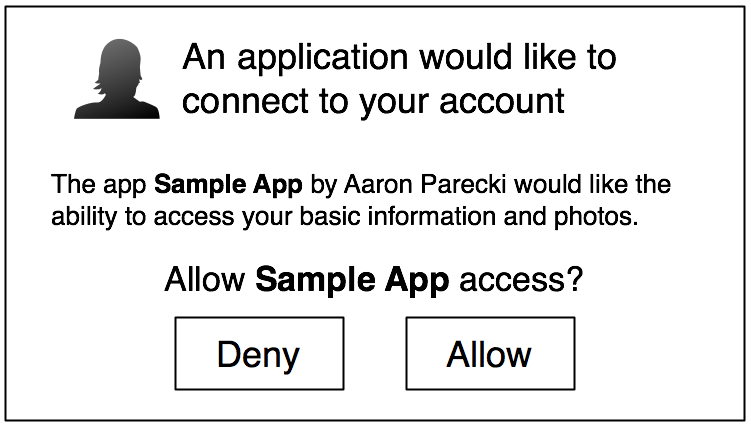- Slack-ruby-bot-server/lib/slack-ruby-bot-server/app.rb Line 35 in 13f330c def configureglobalaliases! I'm sorry I didn't read your code enough bc I don't have much.
- Implementation of OAuth authorization allowing the users to interact with YooMoney from the app (for example, CMS or CRM). Payment acceptance for online stores from bank cards, via Sberbank Online.

Perform the following steps to register a client application:
Learn about OAuth 2.0 (Open Authorization), an open protocol for token-based authentication and authorization on the internet, how it works, and how it differs from OAuth 1.0, SAML and OpenID. This guide covers how to implement an OAuth flow using the Dropbox API. Topics include access tokens, PKCE, scopes, and authorizing your app to access a users' Dropbox data. Fastpath: Admin Channels API You can use OAuth 2 to authenticate all your application's API requests to Zendesk.
Log in to the Identity Server, click the drop-down menu in the upper right corner.
Click Administer OAuth Apps > Register New Clients > Client Configuration.
Specify the following details:
Field
Description
Client Name
Specify the name of the client.
Client Type
Select whether this is a web-based or a desktop client.
For web-based applications specify the client type in this format: https://client.example.org/callback
For native/desktop applications, specify the client type in any one of the following formats:
https://www.namacme.in/
or
x-com.acme.sample://www.namacme.in/
Redirect URIs
Specify the URIs that the Identity Server uses to send the authorization code and implicit requests.
Grants Required
Select the grant types required for this client. Available grant types include Authorization Code (default), Implicit, Resource Owner Credentials, and Client Credentials.
Token Types
Select the token type that the authorization server will return to this client. Supported tokens include Code, ID Token, Refresh Token, and Access Token.
Click Consent Screen Configuration.
Specify the following details:
Field
Description
Client Logo URL
Specify the Logo URL that you want to include in the consent page.
Privacy Policy URL
You can define your own privacy policy. Specify the URL of the privacy policy you want to include in the consent page.
Terms of Service URL
Specify the URL of the terms of service.
Contact
Specify email addresses of people who are related to this client.
Click Authorized JavaScript origins (CORS) and add Domains. The domains configured here can access restricted resources available on the client application. This is an optional step.
Click Advanced OpenID Connect. Specify the following details:
Field
Description
JSON Web Key Set URI
Specify the URI of the JSON file containing the json web keys.
ID Token Signed Response Algorithm
Specify the ID Token Signed Response Algorithm.
ID Token Encrypted Response Algorithm
Zf electronics gmbh driver. Specify the algorithm that is used to encrypt the key.
ID Token Encrypted Response Enc
Specify the algorithm that is used to encrypt the content.
Click Register Client.
I am having a problem to understand the correct purpose of the redirect uri. Following the Google tutorial the javascript API allows me to get a authorizationCode without any redirect URI at all.

Then I send this code to my server and try to call the /token endpoint with this code. But then it will return a 'redirect URI mismatch' which probably means that I need to define the same redirect_uri for this endpoint than I did with the javascript API. My only problem is that I dont specify any on my website.

Anyone knows how to correctly use them?
Oauth Callback Url Example
The flow I am trying to achieve is the following: - Javascript website asks user for permission, getting the authorization code - Code is sent to my server - Server receives access/refresh token with this code and stores it safely
Callback Url Oauth
'The flow I am trying to achieve is the following: - Javascript website asks user for permission, getting the authorization code - Code is sent to my server - Server receives access/refresh token with this code and stores it safely'
This can't be done. Google will not issue an Auth Code to a JavaScript client. To do so would be a major security problem. You will need to write server code to request offline access, which will get you the Auth Code and Refresh Token you're looking for.
Your app can still be a JavaScript SPA (if that's what you're aiming for), but you'll need to serve the app from an app-server (Java, PHP, etc) to handle the offline aspects of the auth.
As an alternative, you can do the whole thing in JavaScript, but you will not have a Refresh Token. If your app is solely JS, that shouldn't be a problem and will be transparent to the user. The gapi library deals with obtaining Access Tokens as needed.

